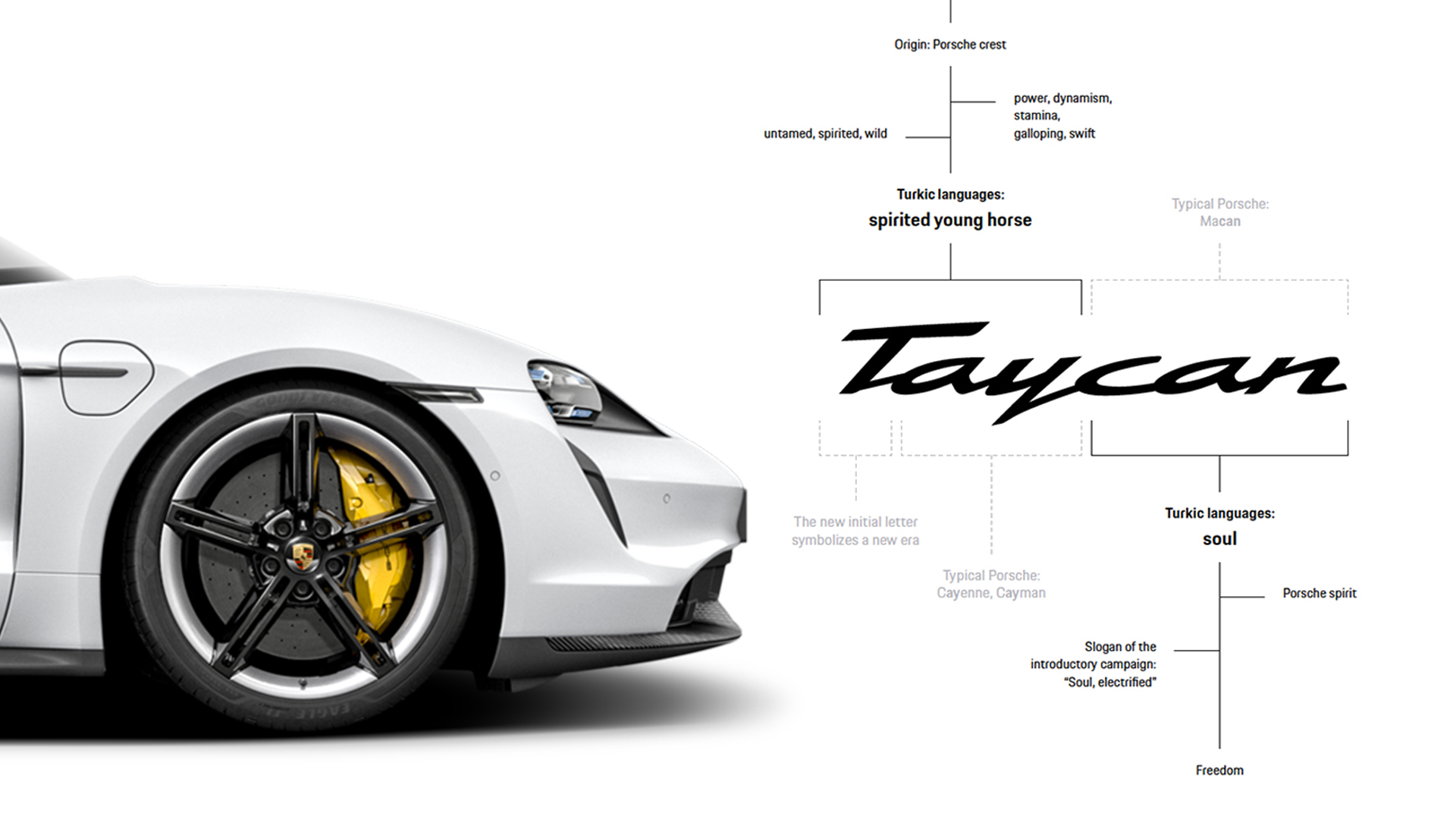

Porsche’s naming scheme across its lineup is fairly straightforward. That is except for the brand’s newest model, the Taycan. The name, from the beginning, has confused a great number of would-be owners, writers, and the general public for its Out-of-the-Blue cadence. Porsche, though, wants you to know that it carefully selected the Taycan’s name and it directly correlates to the rest of the Porsche lineup.
Released alongside the production Taycan a week ago, the name is actually a compound word of “Tay” and “Can.” Tay comes from Turkish meaning “Spirited Young Horse,” a nod to the horse emblazoned on the Porsche crest and something that embodies the “untamed, spirited, [and] wild” nature of the car, along with “power, dynamism, stamina, galloping, [and it being] swift.”
Can, which also finds use in the company’s Macan, is also derived from Turkish and means “Soul.” Stuttgart says that at the base level of the soul, there is “Freedom” which goes hand-in-hand with the “Porsche spirit.” It also neatly lines up with the Taycan’s new ad campaign of “Soul, electrified.” Together, Tay and Can translate to the “soul of a spirited young horse.”We’re beginning to see Porsche’s logic.

“A name for a car is ultimately an emotional decision—but one that should be based on facts and arguments. That requires a systematic approach and a lot of attention to detail,” explains Porsche’s Director of Marketing Kjell Gruner. And systematic is right.
According to Porsche, the company tasked, “Pairs of native speakers representing twenty-three languages [to] consider the sound and meaning of potential model names to rule out unpleasant or unsuitable associations from the outset. Lawyers deliberate every conceivable risk of trademark violation, inspect databases around the world containing millions of registered trademarks, revise names, and locate rights holders. A Herculean task that ultimately lasts a year and a half.”
Porsche also says that the Taycan’s Japanese hominem, “taikan” roughly translates to “physical experience,” which helped solidify the naming process.
As to why Porsche, a German company, ultimately decided to use Turkish, a non-German language to pull from for the brand’s first all-electric offering, we, unfortunately, don’t have any of those answers. Our current theory is that maybe Porsche’s branding office accidentally received someone’s Rosetta Stone software for learning Turkish in 60 Days.
Whatever the case may be, the Porsche Taycan is here and ready to convert the flat-six faithful.